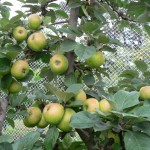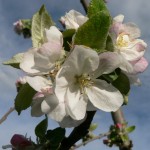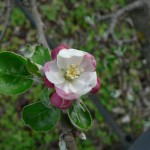Cimetiere de Blangy is a French cider apple in the “douce amère” (the English bittersweet) class. In France it is also known as Blangy and Blagny. In Australia it was until recently listed in collections as Cimitiere du Pays.
The name Cimetiere de Blangy indicates the derivation of the variety. It was a tree located in a cemetery in the town of Blangy-le-Chateau which is about 15km north of Lisieux in Basse Normandie. The town of Blangy-le-Chateau comes within both the Calvados and Pays d’Auge regions giving a good indication of lineage and quality.
Under the control system prevailing in France it was included in the 1949 and 1958 listings for planting in the Calvados region. It appears to have been “retired” from the listing in 1966 (Pommiers à Cidre, INRA, 1997). Despite this, it still appears on various French websites including www.normannia.info with a date of August 2007. The most interesting web reference in relation to Cimetiere de Blangy is probably the newly available book by Henrik Mattsson, “Calvados”. This book is subtitled “The world’s premier apple brandy – tasting, facts and travel”. Mattsson lists approximately fifty cider apple varieties that are being used for the production of Calvados, and Cimetiere de Blangy is one of three that are in Australia.
Current Australian information on Cimetiere de Blangy indicates that it flowers in mid (cider apple) season. As with all varieties there is variation year to year but this central positioning makes it a relatively easy variety to pollinate. Most years it has good overlap with Improved Foxwhelp. The blossom stages for Cimetiere de Blangy of king bloom (centre flower only open) and full bloom (all flowers in cluster open) are pictured.






